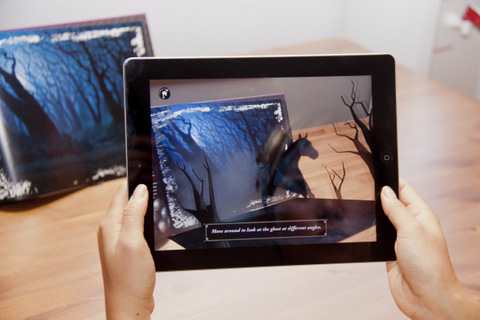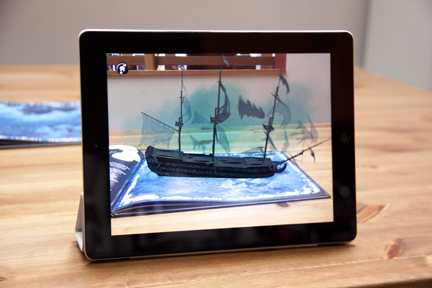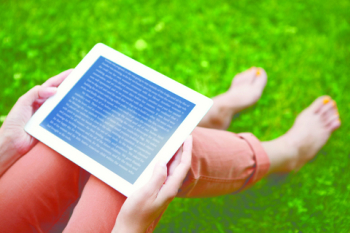It looks like you've stumbled upon a page meant to be read by our code instead of viewed directly. You're probably looking for this page.
Augmented Reality: What a Concept

One could make the argument that books were the original “augmented reality” app. Simply open the cover and you’re transported (in your mind at least) to a different world. Today, though, it’s possible to actually see the printed page “come alive” through augmented reality apps for your smartphone or tablet. It’s the same technology that you’re going to eventually see on your car windshield showing you GPS coordinates and directions to the nearest library or Taco Bell.


A pioneer in augmented reality is indie children’s publisher Goosebottom Books, whose Horrible Hauntings features ghosts that seem to pop out of the page and amaze, if not scare, the bejeezus out of you. Shirin Bridges, “head goose” at Goosebottom, was showing off the technology at the American Library Association Annual Conference in Las Vegas this summer.
“At the last two library shows, we’ve had librarians come to us eager for an augmented reality experience because they’d already heard about the technology,” Bridges said. “At TLA, we sold out before 9 a.m. on the second day.”
The only problem with the technology, Bridges said, is a generation gap. Young people, of course, are more willing to dive into it. “Young people use the book and the app with great fluidity. They aren’t afraid to move the camera around, to experiment with how they can get the ghosts to interact,” she said. “But the people I was selling to were adults. The technology was more intimidating to them. It was very interesting to see the difference.”
The good news for innovative publishers is that kids eventually grow up and buy books, and technology, they like.
Socrates and Digital Reading

In our continuing conversation about the impact technology is having on our ability to read, a bit of old/new “wisdom” went viral earlier this year. The Washington Post revived the discussion of a book written in 2008 by Maryanne Wolfe, a Tufts University cognitive neuroscientist and the author of Proust and the Squid: The Story and Science of the Reading Brain. The premise goes something like this: the Internet and portable reading devices, with all their links and distractions, are making us dumber because we are no longer able to read longer pieces. We’re suckers for distraction, it seems.
Yet the human brain and society have always been able to adapt to change in unpredictable ways, and with minimal damage to human progress, despite the concerns of learned doomsayers. As Wolfe points out in her book, Socrates worried about how the transition from oral to written language would affect young people. He believed that receiving wisdom via the written word rather than actively listening to a teacher give an oration would negatively impact active critical understanding and give the young a “false conceit of wisdom.”
No doubt, Socrates would shudder at some of the “false conceits” that pass for wisdom today, yet he would also look around and see the obvious progress mankind has made via the written word. Children’s brains are surely adapting in ways their grandparents could not comprehend. But, like any new invention (the alphabet, the printing press, the pixel), nothing occurs in isolation. The printed word did not completely replace the Socratic dialogue, and we are not consciously choosing digitally delivered snippets of information over longer, more “serious” pieces that contain no distraction. The brain has always used a combination of media to get what it needs in order to progress in an increasingly complicated society.
What impact will all this digital learning have on human progress? It will probably enhance it. Our children’s brains are already adapting in ways that ours did not. Watch this space in a couple of millennia for the answer.
Howard Lovy